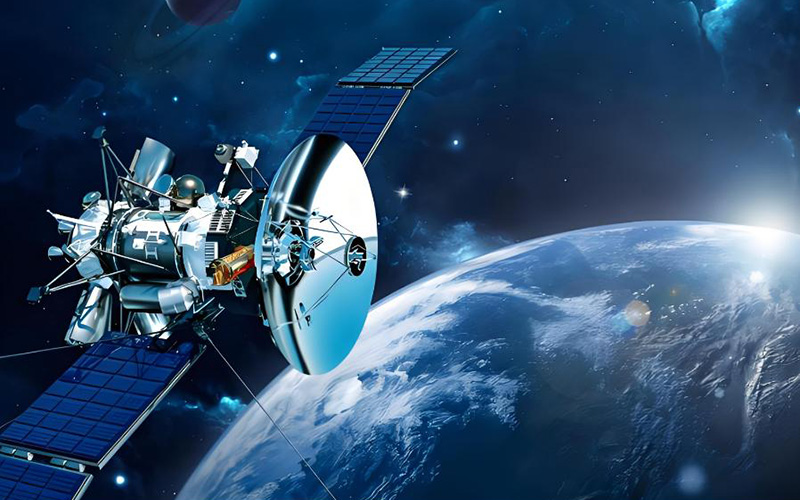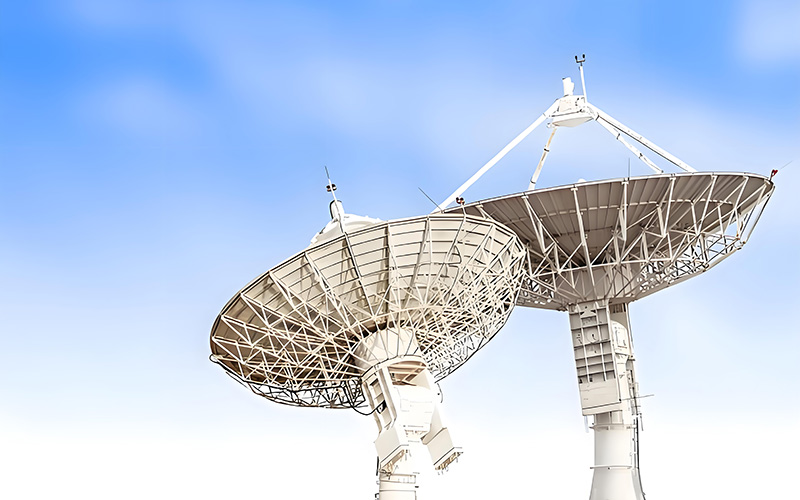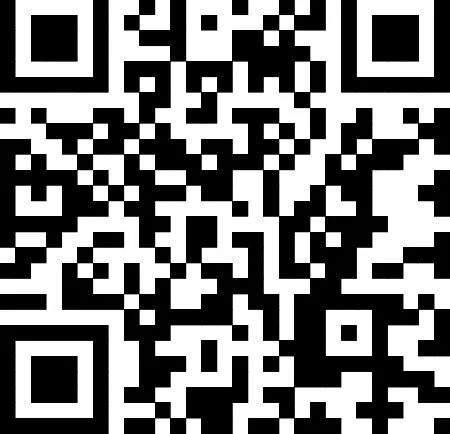
RF & Wireless
RF&Wireless Custom PCB Design and Manufacturing
RF PCB is a printed circuit board specifically designed and manufactured for Radio Frequency Circuits. RF circuits refer to high-frequency signal circuits used in wireless communication, radar, satellite communication, radio broadcasting and other fields. The characteristics of RF circuits are high working frequency, fast signal transmission speed and strict requirements for circuit layout and design.
In modern electronic products, high-frequency circuit boards play a crucial role as an important component. It’s not only widely used in communication, wireless networks, etc., but also plays an important role in medical equipment, military equipment and other fields.
Purpose of High-Frequency Circuit Boards
High frequency circuit boards are mainly used for transmitting high-frequency signals, such as RF signals, microwave signals, etc. It’s widely used in communication equipment, radar system, satellite communication and other fields. High frequency circuit boards can achieve fast signal transmission and high-frequency operation, ensuring the stability and reliability of equipment.
High frequency circuit boards are also widely used in medical equipment, aerospace, military equipment and other fields. In the case of medical equipment, high-frequency circuit boards can help achieve the acquisition and transmission of medical images to improve diagnostic efficiency; In the case of aerospace field, high-frequency circuit boards can be applied for flight control system, navigation system, etc.; In the case of military equipment, high-frequency circuit boards play an important role in ensuring national security.
Importance of High-Frequency Circuit Boards
The main reasons why high-frequency circuit boards are so important are as follows:
High-frequency circuit boards have excellent high-frequency performance and transmission characteristics. They can achieve functions such as high-speed data transmission and low loss transmission, meeting the needs of various high-frequency signal transmission.
Secondly, high-frequency circuit boards have good anti-interference ability and stability. In high-frequency environments, circuit boards are often subject to various interferences, and high-frequency circuit boards can effectively resist external interference to ensure the stability and reliability of signal transmission.
In addition, the production process of high-frequency circuit boards requires high quality materials and advanced production techniques. Through precise design and manufacturing, high-frequency circuit boards can achieve more miniaturization and higher performance to meet the requirements of modern electronic products for high performance and reliability.
High-frequency circuit boards play an indispensable role in the modern electronic field. Its widespread application and importance are not only reflected in fields such as communication, healthcare and military, etc., but also in promoting technological progress and social development. Therefore, understanding the purpose and importance of high-frequency circuit boards is of great significance for improving the performance and quality of electronic products.
Military Printed Circuit Board Applications
Printed circuit boards are essential parts in a wide range of military applications, from military communication systems to radars and avionics systems. PCBs offer a compact and efficient platform for integrating electronic devices that enable revolutionary military technologies. Below are some common applications of military printed circuit board.
Communication System
Military and defense communication systems are mainly dependent on printed circuit boards to send and receive signals over different frequencies and distances. PCBs are mostly used in radios, Radars, tactical communications systems and satellite communication systems. It is frequently used in military communication system.
Radar And Navigation System
This system will track movements, detect objects, and implement PCBs to control complex signal processing and data analytics. Printed circuit boards are essential materials used in phased array radars, ground-based radars, and airborne radars.
Military Control Systems
Military PCBs are crucial in missile guidance and control systems, which ensure reliable navigation, focused tracking, and detonation. Military PCBs integrate sensors, control algorithms, and actuators to enhance and ensure efficient missile operation.
Avionics Systems
Printed circuit boards contribute to the applications of avionics systems, offering the electronics infrastructure for navigation mechanisms, flight control, communication systems, and other essential functions. PCBs are used in flight control computers, cockpit displays, sensor systems, and communication radios.
Electronic Warfare Systems
This system uses a printed circuit board to jam the enemy radar system, interrupt communication, and save friendly military forces from electronic and cyber security attacks. Military PCBs are integrated into electronic warfare systems like electronic countermeasures, radar, etc.
Weapon Systems
Military PCBs are also integrated into weapon systems, such as guided missiles and torpedoes. It provides the essential electronic materials and control circuitry for guidance, arming, and detonation.
Reconnaissance and Surveillance Systems
These systems depend on printed circuit boards to analyze and process video, image, and sensor data. Military PCBs are used in UAVs (unmanned aerial vehicles) and intelligence analysis devices.
Training and Simulation Systems
There is also an essential role of military printed circuit boards in military training and simulation systems. Such systems offer a realistic virtual approach for soldiers, defense personnel, pilots, and other military personnel. Military PCBs contribute to the integration of sensors, data processing devices, and actuators in simulation systems.
Information and Cybersecurity Systems
Military PCBs benefits the Military personnel and law enforcement forces must protect their secrets, sensitive data, and networks in cybersecurity systems. PCBs are used in firewalls and other cybersecurity devices.




Aerospace PCB Assembly: From Designs to Selecting Suppliers
Exploring space and beyond Earth’s limits, the aerospace industry is getting more advanced. In aerospace applications, PCB plays a vital role. It handles the operation of any system. It also provides the electrical and mechanical support between various electronic components. IoT and electronics have become even more important with the increased aerospace business. Aerospace PCB assembly requires precision, reliability and proper planning.
This article provides brief information on the importance of PCB in aerospace applications.
Applications of Aerospace PCB Assembly
Aerospace PCB assembly is used in technology and equipment across the aerospace industry. They should function fully in extreme operating conditions. This includes highly radioactive conditions, outer space, and extreme temperatures. The PCB assembly must withstand high-speed movement, vibrations, and impact. It must also withstand the conditions during takeoff and landing.
Some of the applications of Aerospace PCB assembly include:
Temperature sensors
Communication systems
Radar Installations
Satellite Technologies
Battery Management Units (BMS)
Flight Instruments and Equipment, etc.
Benefits of Aerospace PCB Assembly
PCB assembly plays a significant role in aerospace applications. It provides reliability and precision. Some of the benefits of Aerospace PCB Assembly includes:
Precision Engineering
In the aerospace industry, accuracy and precision are crucial factors. The electronic components in aerospace must resist harsh environments. In the aircraft sector, intricate designs and careful soldering are vital for building printed circuit boards (PCBs). This is necessary to ensure that the circuitry operates under challenging circumstances. Aircraft require precision engineering to avoid fatal mistakes.
Withstand Harsh Conditions
PCB manufacturers use copper and aluminium for high-temperature laminate substrates. This helps the boards survive extreme temperatures. Similarly, to mitigate the radiation, specialised materials are used.
Redundancy and Reliability
Designers and developers create aerospace units with backup options. Even if any components fail, there are backups. PCB assembly is crucial for designing redundant systems. It makes sure they operate smoothly, even if a component fails. To cut the risk of failure, rigorous testing and quality control measures are implemented during the entire PCB assembly process.
Design Factors of Aerospace PCB Assembly
In the aerospace PCB assembly environment, design factors are critical for optimal performance and reliability. Some of the critical design factors include:
Compliance with IPC Class 3 standards
These standards are designed for electronic devices to operate in harsh environments. It includes extreme temperatures and exposure to corrosive chemicals. Heat resistance materials like AP, Pyralux and FR408 are some of the common choices for metal components.
Frequency Compatibility
Aerospace PCB is a mix of both low and high-frequency components to prevent interference. Thus, designers should design PCBs to differentiate the frequencies. This way, high-frequency components won’t interfere with signals from low-frequency components. Besides, the clock signal-generating components require additional shielding with the enclosure aluminium materials.
Material Selection
The aerospace environment can experience harsh conditions, including high temperatures, moisture and vibration. Thus, the manufacturer must choose a substrate like copper laminates or aluminium for strength. They may also consider ENIG and immersion silver. Besides, selecting materials with a low coefficient of thermal expansion will minimize the change in size from temperature fluctuations.
Shock Absorption
Aerospace devices are prone to mechanical vibrations. Therefore, shock-absorbing materials, like conformal coatings, should be used to protect the components from vibrations.
Surface Finish
Aerospace PCBs experience vibrations, moisture, and extreme temperatures; thus, they require a protective surface finish. During PCB assembly, apply a coating to prevent oxidation and corrosion. Also, the use of thermal compounds helps to insulate the heat sinks.
Electromagnetic Shielding
PCB manufacturers should incorporate EMI shielding. This includes proper routing, grounded planes, and shielding enclosures.
Why RichPCBA?
Aerospace PCB assembly is critical. It supports and operates electronic equipment under challenging conditions. It ensures reliability through precision engineering. The use of specific materials is known for their resistance to severe temperatures. Material selection determines the reliability of a PCB. This includes standards like IPC Class 3 and other aerospace requirements.
Get precise and reliable aerospace PCB assembly with RichPCBA. Take your projects to new heights with our top-notch expertise. Our certified quality and advanced technology will help. Choose RichPCBA for excellence in every circuit. Reach out to RichPCBA today for superior aerospace innovation!

